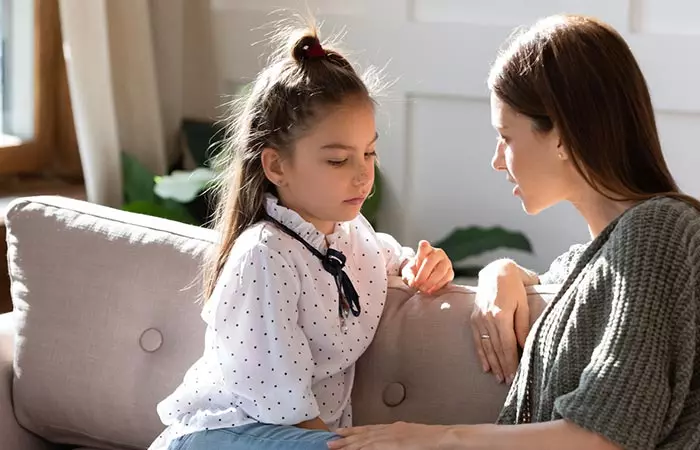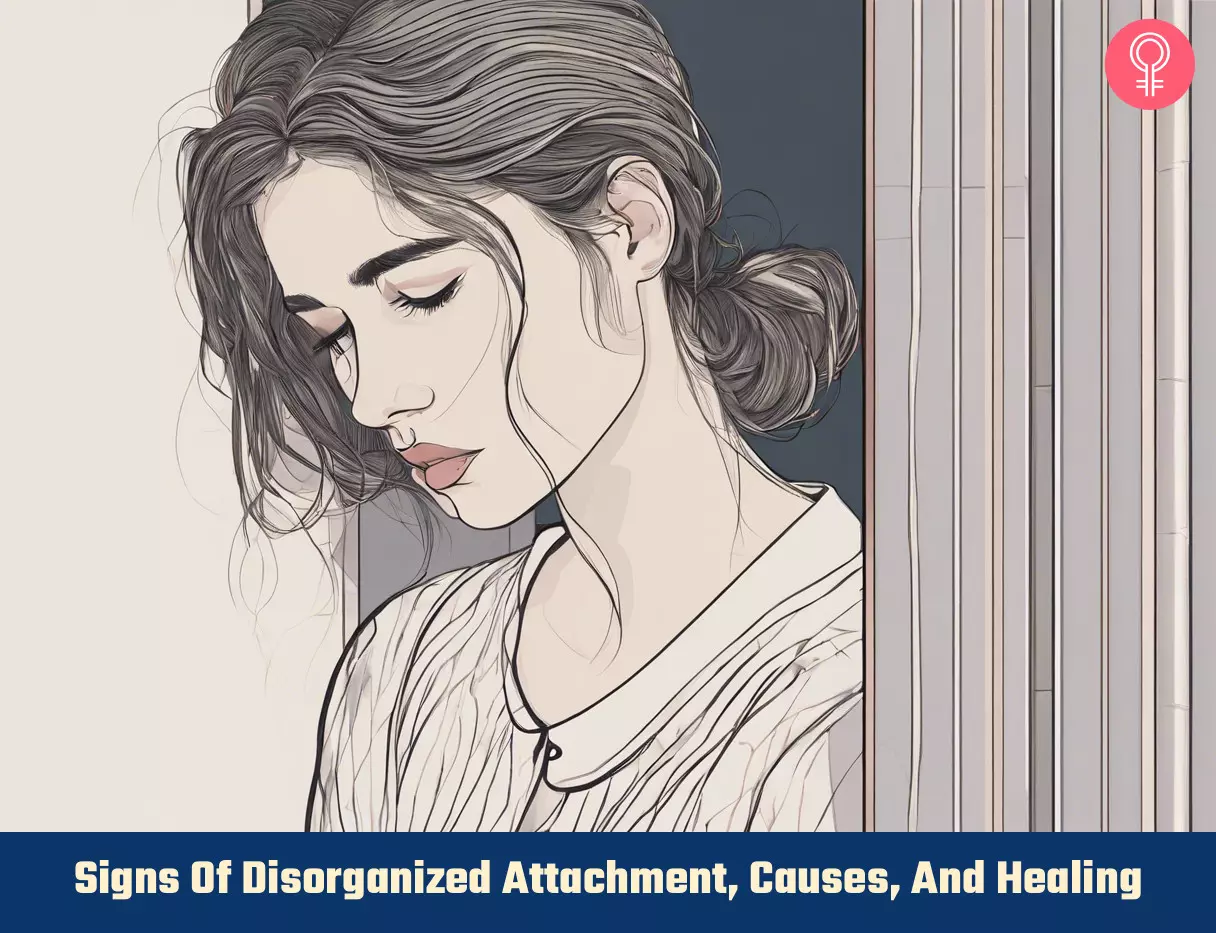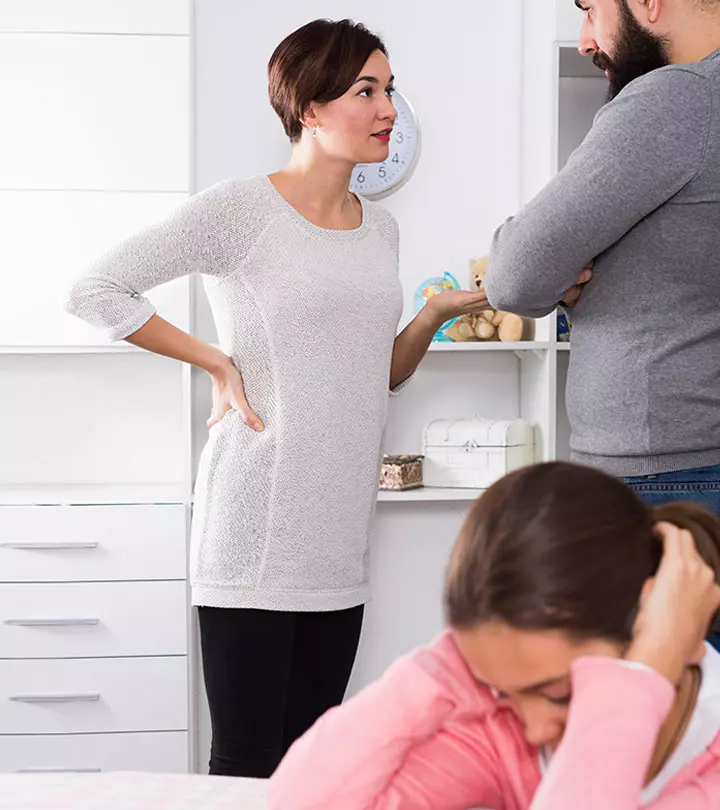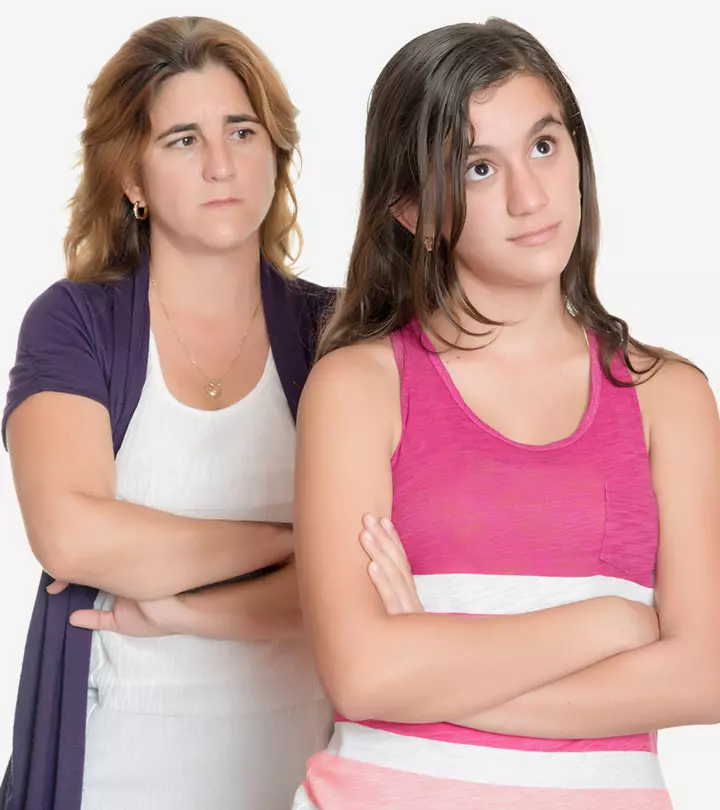9 Signs Of Disorganized Attachment, Causes, And Healing
When childhood traumas and abuse accompany one into adulthood, it isn't a pretty picture.

Image: Shutterstock
Babies are entirely dependent on their primary caretakers or parents for survival.
They form a strong emotional connection and, in many cases, feel secure and safe with them. However, in a disorganized attachment, their only source of safety (caregivers or parents) becomes a source of fear.
When a caregiver is abusive, the child may experience emotional and mental trauma. They feel scared, tense, and distressed around them. The root cause of this kind of attachment is abuse or neglect (which is a form of abuse), leading to a lack of appropriate nurturing, which builds trust in a healthy connection, support, and love from parents.
Also, a child who experiences rejection and abandonment from their parents will feel low self-worth. For those that struggle with building attachments, relationships can be very tough. This article explores the causes of disorganized attachment, its signs, and ways to heal. Scroll down for more information.
In This Article
How Is Attachment Formed?

According to John Bowlby, a British psychologist, and the first attachment theorist, attachment is a “lasting psychological connectedness between human beings”. Attachment theory talks about the fact that primary caregivers who are available and responsive to an infant’s needs allow the child to develop a sense of security. The infant is aware that the caregiver is dependable, which creates a secure base for the child to explore the world.
Depending on parenting, the type of attachment varies, and a child can develop one of these four attachments:
- Secure Attachment
Secure attachment is a bond that meets the child’s need for security and understanding, allowing for optimal development of the child’s nervous system. As the child’s brain develops and organizes itself, they build empathy, trust, eagerness to learn, and healthy self-awareness.
- Avoidant Attachment
Avoidant attachment occurs in children who do not receive sensitive responses to their needs or distress. During the early years of childhood, kids who experience neglect can develop an avoidant attachment style, which can allow them to become overly independent emotionally and physically. You need to understand how to communicate with an avoidant partner to build a healthier relationship.
- Ambivalent/Anxious Attachment
Ambivalent attachment is a form of insecure attachment that occurs due to inconsistent responses of the caregivers.
As a result of this unstable attachment, a child develops anxiety and preoccupation about the caregiver’s availability.
- Disorganized Attachment
It is primarily found in people who were physically, verbally, emotionally, or sexually abused in their childhood, or witnessed this chaos in their environment. As adults, people with this attachment style are inconsistent in their behavior and have difficulty trusting others. They often suffer from substance abuse, depression, or borderline personality disorder.
Recognizing one’s attachment style can provide useful insights into one’s relationship patterns, such as fear of abandonment or difficulty trusting others. This awareness helps people address their underlying insecurities, improve communication, and cultivate emotional maturity.
Understanding attachment styles is also important for parents and caregivers to nurture secure bonds with children.
That said, in this article, we are going to dive deeper into the disorganized attachment style. Keep reading to learn more.
Key Takeaways
- Attachment theory states that a stable attachment is formed when a child gets a sense of security from their primary caregiver.
- Disorganized attachment is mainly found in people who received or witnessed physical, verbal, emotional, or sexual abuse or violence in their environment.
- Though the child may love the caregiver in such an attachment, they stay in constant fear of rejection and abandonment.
- Feeling constantly ashamed, unloved, or unworthy could be signs of disorganized attachment.
What Is Disorganized Attachment?

A child develops an organized attachment with their caregiver when they provide a safe and secure base for them. The child knows that they have a safe place to return to and someone who will always strive to meet their needs. They become confident to venture out independently and explore the world. They may experience rejection, disappointment, etc., but will bounce back because they have a solid foundation of trust.
But, when the caregiver has not created a safe and secure base, a child develops disorganized attachment. Disorganized attachment occurs from fright without solutions. The child may love their caregivers but stays in constant fear of rejection and abandonment.
Parents can frighten their children unconsciously in various ways. It may be through abuse, violence, or some unresolved past issues in the parent’s life that leave him or her feeling afraid, unstable, and distrusting. This unintentionally scares the child, and they become unsure how the caregiver will respond to their needs. A child’s instincts are thus conflicted as they seek support and security from their caregiver, but they are also scared.
People with disorganized attachment may struggle with trust, fearing rejection or abandonment while also constantly doubting their caregiver’s intentions. Their heightened sensitivity to perceived threats often triggers intense emotional reactions, such as sudden withdrawal or aggression, making conflict resolution difficult. They might feel overwhelmed by closeness yet distressed by distance, creating a cycle of emotional instability. There is also an increased likelihood of anxiety and depression in the future with challenges in forming stable relationships.
Furthermore, disorganized attachment can lead to self-sabotaging behaviors, such as testing other’s commitment to them or avoiding vulnerability altogether. This attachment style is also associated with difficulties in regulating emotions, which may strain communication.
Now that you know what attachment is and how it is formed, let’s look at the causes of disorganized attachment.
Causes Of Disorganized Attachment

Disorganized attachment develops due to a parents’ or caregivers’ consistent failure to respond appropriately to their children’s distress. It happens due to real or perceived fear. A child knows subconsciously that their safety is dependent on their caregivers and the problem arises when the source of security becomes the source of apprehension.
A few common causes that might lead to disorganized attachment are:
- Ignoring the child’s cries for a long time.
- Never responding to the child positively.
- Yelling or mocking the child’s fears.
- Using fear or intimidation to stop crying.
- Avoiding physical contact or genuine connection.
- Not providing enough support during vulnerable situations.
- Allowing a child to witness violence, abuse, or neglect in the environment.
One of the primary causes of disorganized attachment is often the result of intergenerational parenting patterns. This means parents respond to their children in the same unhealthy ways their parents responded to them when they were kids.
A person with disorganized attachment might experience a life of crisis and chaos. Check out the next section to explore some of the common signs of disorganized attachment.
9 Signs Of Disorganized Attachment

- Constant fear of rejection and difficulty in connecting with and trusting others.
- Chaotic, unpredictable, or intense relationship patterns and behaviors.
- Extreme need for closeness with the tendency to avoid intimacy and push others away.
- Aggressive behavior towards caregivers or partners.
- Latent fear of caregivers or partners.
- Negative self-image, low self-esteem, and a pessimistic view of the world as untrustworthy or chaotic.
- Deep-rooted shame.
- Depression and anxiety issues.
- Feeling unlovable, unworthy, or inadequate.
- Difficulty in expressing emotions, or feeling overwhelmed by emotions.
While navigating a disordered relationship, a blogger reflected, “I found myself spiraling down into a rabbit hole of self-destructive, self-deprecating thoughts (i).” “Is it healthy relating or trauma bonding?” she wondered, grappling with the difficulty of discerning present experiences from past traumas. She concluded, “A love story would never spare us the difficult journey of our lifetime: finding [a] home within ourselves.”
A few practices can help you recover from a disorganized attachment and establish a secure relationship. However, the best solution to heal from such a traumatic experience is to seek help from a professional therapist.
Healing From Disorganized Attachment

- Seek Professional Help
Professional therapy can help develop a safe, secure, and stable relationship. It will help a person with disorganized attachment develop effective communication skills and set boundaries in other relationships. Therapy can also address other mental health issues such as anxiety, depression, and fear management. Your counselor will provide many examples of caring and acceptance to make you feel lovable and worthy.
 Quick Tip
Quick Tip- Recognize Your Triggers
Disorganized attachment often leads to a feeling of abandonment – you feel disconnected from others and yourself. The constant fear and anxiety can lead to questioning your self-worth. So, take a moment to reflect on the factors that caused such feelings. Recognizing the triggers will help you understand the root cause of your attachment behavior. It will enable you to get rid of the feeling of abandonment. You can develop a sense of security within yourself and the people around you.
- Learn Ways To Self-Soothe
Focus on your interests and the things you like to do. This will help make you feel calm and healthy. Self-talking is also a primary way of self-soothing. Speak gently to yourself the way a loving person would speak to a child. Remind yourself that you deserve love and connection. Slowly picture the wonderful people of your life in your mind and repeat their names.
- Communicate About Your Needs
Healing from disorganized attachment has a lot to do with being honest and communicative about your emotional needs. You must talk openly and make yourself heard by your loved ones. Also, remember to be gentle, patient, and forgiving to yourself.
 Quick Tip
Quick TipInfographic: Self-Soothing Strategies For Disorganized Attachment
There are various ways to heal from and manage disorganized attachment. You can seek professional help to identify your triggers and communicate your needs. Learning ways to self-soothe plays a massive role in helping you calm down when dealing with the anxiety and stress of this attachment style. Check out the infographic below to learn easy and effective self-soothing techniques. Scroll down! Illustration: StyleCraze Design Team
Disorganized attachment is characterized by difficulty forming stable relationships and can result from childhood trauma from sexual, verbal, emotional, or physical abuse. It may manifest as trust issues, borderline personality disorder, and substance abuse, and other addictions. Fear of rejection, negative self-image, chaotic relationships, deep-rooted shame, and an intense need for closeness combined with a deep fear of intimacy are common signs of disorganized attachment. Healing from this kind of attachment pattern is possible by communicating emotional needs honesty, recognizing triggers, learning self-soothing techniques, and seeking professional help.
Frequently Asked Questions
What does disorganized attachment lead to?
Disorganized attachment can lead to a lot of chaos, inconsistency in relationships, confusion and fear of rejection. It may even lead to mental health issues like depression or substance abuse.
What does disorganized attachment look like in adult relationships?
Individuals with disorganized attachment have a confusing approach to their relationships. On the one hand, they want to be loved and accepted. On the other hand, they don’t trust people and are scared their loved ones will hurt them. As a result, they push them away.
How do you love someone with disorganized attachment?
It is important to understand that your loved one’s disorganized attachment style comes from a place of pain and fear. Be understanding, patient and supportive of them. Listen to them actively when they want to discuss their fear with you. However, if their attachment style starts causing issues in the relationship, seek professional help.
Is disorganized attachment the same as insecure attachment?
Disorganized attachment is the most extreme type of insecure attachment. It is primarily found in individuals who have suffered physical, emotional, sexual, or verbal abuse.
Illustration: Signs Of Disorganized Attachment Causes And Healing

Image: Stable Diffusion/StyleCraze Design Team
Is your partner constantly pushing you away just to drag you back close? This could be a sign of a disorganized attachment style. Check out this video to know more.
Personal Experience: Source
StyleCraze's articles are interwoven with authentic personal narratives that provide depth and resonance to our content. Below are the sources of the personal accounts referenced in this article.
i. “Do I Hold On or Let Go?” — How to Love when you have Disorganized Attachment.https://medium.com/mindfullove/do-i-hold-on-or-let-go-how-to-love-when-you-have-disorganized-attachment-6ac545d6733
Read full bio of Dr Nancy B Irwin
Read full bio of Sneha Tete
Read full bio of Asmita De
Read full bio of Sangita Goel


























Community Experiences
Join the conversation and become a part of our empowering community! Share your stories, experiences, and insights to connect with other beauty, lifestyle, and health enthusiasts.